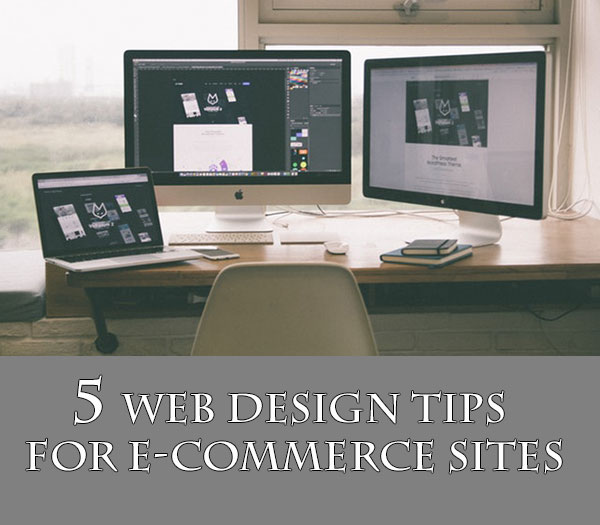One of the most important parts of creating a successful e-commerce business is good web design. After all, this is the very platform that will be attracting, educating, and ultimately converting your clients. Good site design will pique interest in your products, garner trust, and incite rapid action.

The following are five web design tips that can help you achieve all of these things and more:
- Engage in Storytelling
Many of the top e-commerce sites succeed by engaging their audiences with visual storytelling techniques. This personal, personable approach makes people feel connected to both the products that they’re looking at and the brands that they represent. Use images and words to tell others why your products are important to you, how they inspired your business, and what you intend for the future. By making consumers feel connected to you, you’ll be building both loyalty and trust. More importantly, this approach will set your offerings apart from those of e-commerce companies that are merely using basic images and product descriptions to sell their wares.
- Use Quality Photos and an Attractive Image Layout
One of the largest pain points for online shoppers is the inability to see, touch, and experience products before buying them. The surest way to address this is by using high-quality photos that clearly and reliably convey the overall value of what you’re offering. Images that are grainy and unclear could convince buyers that your merchandise is low in value or that you have something to hide. You also want to make sure that these images are presented in a cohesive way. Never underestimate the importance of product image layout. Whether it’s a catalog of kids’ toys or cheeky bathing suit bottoms, giving online shoppers the chance to see the items is crucial. Showcase your items from all angles, and make sure that product photos are captured at reasonable sizes.
- Limit Buyers’ Options
Too many images and product offerings on a single page will make your website seem cluttered and disorganized. More importantly, it will diminish your ability to establish yourself as a reliable source of information on any product. Determine a theme for your pages and choose the products that you wish to highlight accordingly. This strategy will limit the amount of time that prospective buyers have to spend looking for what they want, and it will also inspire action by making it easier for shoppers to focus and hone in on the very options that you’re hoping to move.
- Be as Transparent as Possible
Honesty in e-commerce web design starts with great photos, but it also includes clear and easy-to-find information about all relevant store policies. Make it easy for people to access your shipping and return policies by including a link to these agreements in a prominent place on your home page. Moreover, when crafting these policies, use language that’s clear, concise, and doesn’t leave any room for misinterpretation. When you make a concerted effort to be transparent in pricing and store policies, people will be more likely to choose you over e-commerce sellers who do not.
- Use Design Strategies that Incite Buyer Urgency
The best way to incite buyer urgency is by using language that makes them feel as though they might miss out. Limited-time offers and exclusive deals can be mixed among your regular offerings or reserved specifically for an easy-to-access “Specials” or “Discounts” page. Highlight keywords by making them larger or by presenting them in a contrasting color such as bright red. If buyers already like what they see on your pages, discovering that short-term offers are soon to expire will prompt them to take immediate action, whether by completing the purchasing process, subscribing to your email list, or connecting with customer service for additional info.






Speak Your Mind